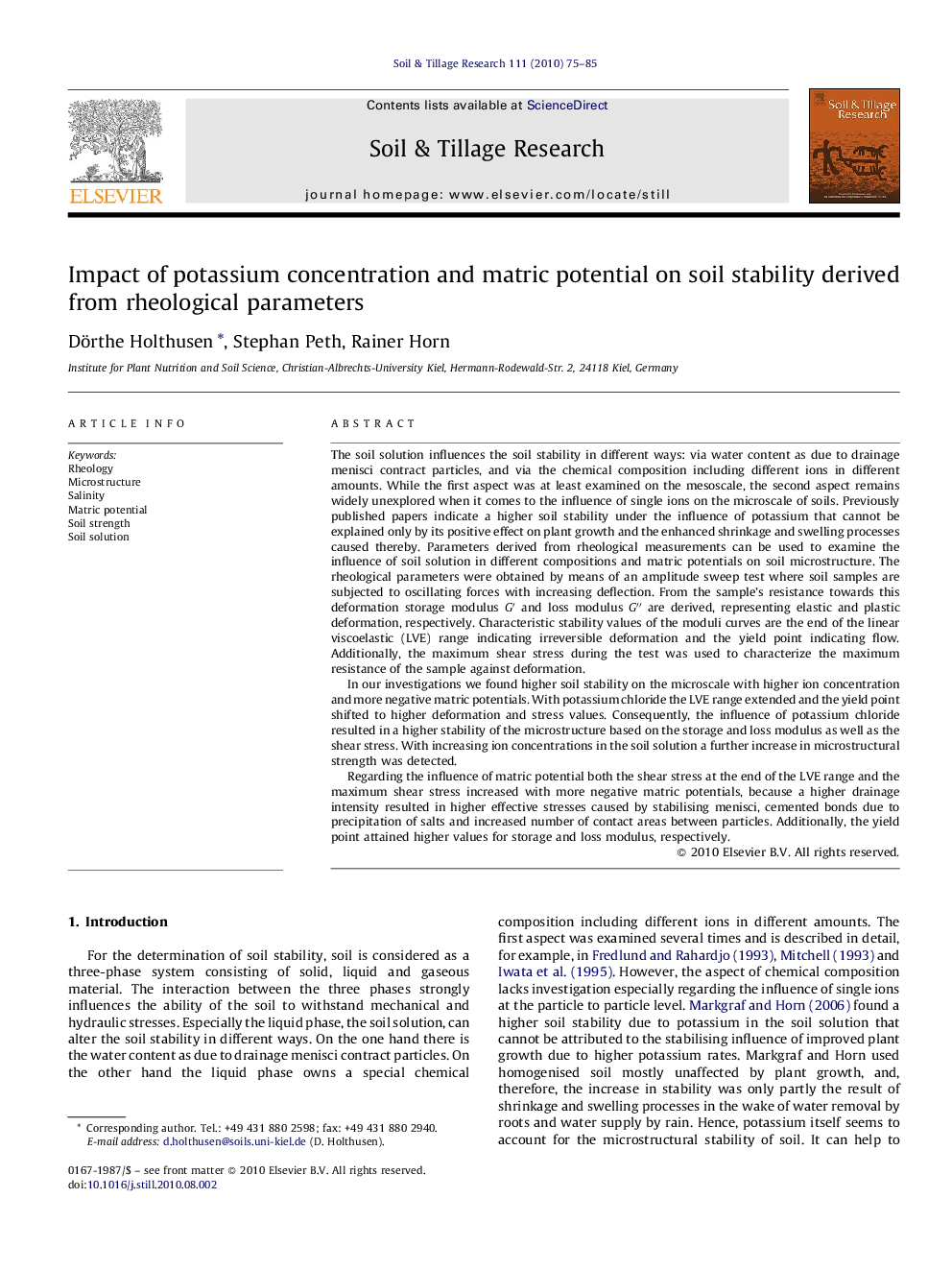| کد مقاله | کد نشریه | سال انتشار | مقاله انگلیسی | نسخه تمام متن |
|---|---|---|---|---|
| 306115 | 513073 | 2010 | 11 صفحه PDF | دانلود رایگان |

The soil solution influences the soil stability in different ways: via water content as due to drainage menisci contract particles, and via the chemical composition including different ions in different amounts. While the first aspect was at least examined on the mesoscale, the second aspect remains widely unexplored when it comes to the influence of single ions on the microscale of soils. Previously published papers indicate a higher soil stability under the influence of potassium that cannot be explained only by its positive effect on plant growth and the enhanced shrinkage and swelling processes caused thereby. Parameters derived from rheological measurements can be used to examine the influence of soil solution in different compositions and matric potentials on soil microstructure. The rheological parameters were obtained by means of an amplitude sweep test where soil samples are subjected to oscillating forces with increasing deflection. From the sample's resistance towards this deformation storage modulus G′ and loss modulus G″ are derived, representing elastic and plastic deformation, respectively. Characteristic stability values of the moduli curves are the end of the linear viscoelastic (LVE) range indicating irreversible deformation and the yield point indicating flow. Additionally, the maximum shear stress during the test was used to characterize the maximum resistance of the sample against deformation.In our investigations we found higher soil stability on the microscale with higher ion concentration and more negative matric potentials. With potassium chloride the LVE range extended and the yield point shifted to higher deformation and stress values. Consequently, the influence of potassium chloride resulted in a higher stability of the microstructure based on the storage and loss modulus as well as the shear stress. With increasing ion concentrations in the soil solution a further increase in microstructural strength was detected.Regarding the influence of matric potential both the shear stress at the end of the LVE range and the maximum shear stress increased with more negative matric potentials, because a higher drainage intensity resulted in higher effective stresses caused by stabilising menisci, cemented bonds due to precipitation of salts and increased number of contact areas between particles. Additionally, the yield point attained higher values for storage and loss modulus, respectively.
Research highlights▶ Increasing KCl concentrations in soil solution increased rheological parameters of homogenized soil. ▶ Salt had, therefore, a stabilising influence on soil structure at the microscale. ▶ Those results were gained in investigations on remoulded soil samples instead of suspensions. ▶ Negative matric potentials increased microstructural stability similarly.
Journal: Soil and Tillage Research - Volume 111, Issue 1, December 2010, Pages 75–85